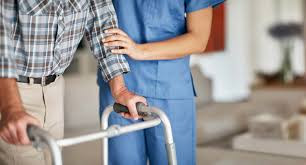Definition
A tremor is a repetitive, shaking movement that can occur in one or more parts of the body. This movement happens unconsciously and cannot be controlled by the affected person. Tremor occurs due to muscle contractions. An intentional tremor is a tremor that occurs when the person is trying to move their hand or grasp something, and the tremor worsens with movement and before reaching the target. The most commonly affected body parts are the upper body or muscles around the vocal cords. Tremors can also occur in the head and limbs, such as arms and legs.
To date, there are no specific additional tests to diagnose tremors, making it difficult to differentiate types of tremors during initial examinations.
Causes
The cause of intentional tremor is a disorder or abnormality in the cerebellum (small brain). Usually, the signal delivery system from the cerebellum to the muscles is also disrupted, causing tremors. Disturbances in the cerebellum sometimes not only cause tremors but also coordination and movement precision issues in the patient.
Other possible causes of intentional tremor include:
- Psychological conditions: anxiety, anger, and fatigue
- Medications: Antiepileptic/anticonvulsant drugs such as phenytoin and carbamazepine
- Blood vessels: disrupted blood flow in the cerebellum area
- Trauma: head injury causing disruptions in the central nerve fibers, especially in the cerebellum area
- Autoimmune diseases or nerve fiber inflammation such as multiple sclerosis
- Metabolic disorders: body metabolism issues (e.g., liver damage)
- Toxins: barbiturate poisoning, alcohol addiction, and mercury poisoning
- Genetic: Wilson's disease (a genetic disorder causing abnormal copper accumulation, especially in the liver, brain, and cornea)
Risk factor
Risk factors for intentional tremors are closely related to their causes. Lack of sunlight exposure and vitamin D deficiency can make a person more susceptible to multiple sclerosis and other autoimmune diseases. Vitamin D plays a role in the immune system and helps prevent inflammation. Other risk factors for multiple sclerosis include:
- Age: between 20-40 years
- Female gender
- Family history of multiple sclerosis
- Infections, such as Epstein-Barr virus infection
- History of stroke
Since intentional tremor is often associated with cerebellar disturbances, such as diseases causing impaired blood flow to the cerebellum (e.g., stroke) or cerebellar infection. Unsafe driving habits increase the risk of accidents, leading to head injuries and cerebellar damage. Alcohol addiction also raises the risk of intentional tremors.
Symptoms
Tremors can occur in one part of the body or both. Most tremor cases are symmetrical, meaning they occur on both sides of the body. However, if a tremor is caused by a mass or tumor in the brain, it can occur on only one side of the body. Intentional tremor occurs when a person intends to move their hand. For example, when buttoning a shirt or picking up an object, the tremor usually worsens. The severity of the tremor can decrease if the person closes their eyes while moving.
Besides difficulty in performing daily movements, patients may experience limping and eye movement disturbances. Pathological reflexes (reflexes that should not be found in a healthy person) may increase in some patients, observable through doctor or healthcare provider examinations.
Diagnosis
Doctors will inquire about the patient's medical history and perform a physical examination to diagnose the cause and type of tremor. Besides the physical examination, doctors will ask the patient to perform some movements and observe the tremor's severity. Patients with tremors usually have complaints while performing daily activities such as drinking from a glass, holding utensils, and focusing their eyes on objects.
Other physical examinations that can support the diagnosis of tremor causes include:
- Balance and communication skills assessment
- Muscle rigidity examination
- Finger-to-nose test: In patients with intentional tremors, the tremor usually worsens when asked to move their hand quickly
In addition to the physical examination, supporting diagnostic tests such as imaging or laboratory tests that can be conducted include:
- Magnetic Resonance Imaging (MRI): the gold standard for someone with intentional tremor. MRI can clearly show brain tissue images
- Computed Tomography Scan (CT-Scan): useful for observing blood vessel abnormalities and trauma
- Ultrasonography (USG): quickly visualizes abdominal organs such as the liver
- Laboratory tests: blood tests, vitamin levels, and urine tests to check for toxins in the body
Management
Treatment for someone with a tremor focuses on the tremor's cause. Medications that can alleviate tremor symptoms include:
- Medications: often prescribed for patients with multiple sclerosis, typically under doctor's supervision
- Rehabilitation therapy: uses physical rehabilitation techniques to improve daily activity capabilities by strengthening muscles and enhancing coordination and balance
- Relaxation techniques to relieve tremor
- Invasive therapy: using deep brain thalamic stimulation with surgical techniques and inserting electrodes into the brain tissue
- Lifestyle changes: reducing caffeine consumption can alleviate tremor
Complications
If the tremor's cause is not treated, symptoms can worsen and interfere with daily activities. Currently, there are no life-threatening complications from tremor.
Prevention
To date, some causes of intentional tremors, such as multiple sclerosis, cannot be prevented. The mechanism of multiple sclerosis is unknown, with current theories suggesting it results from interactions between environmental factors and the body. Research has explored potential preventive measures for multiple sclerosis, such as:
- Maintaining adequate vitamin D levels
- Periodic fasting to alleviate multiple sclerosis relapses
- Regular coffee consumption
- Red wine consumption: contains anti-inflammatory properties for brain tissue
- Quitting smoking
- Consuming a low-saturated-fat diet
- Keeping stress levels low and engaging in regular physical activity
Other preventive measures include stroke prevention, such as:
- Lowering high blood pressure
- Regular check-ups, especially if you have heart disease or diabetes
- Engaging in regular physical activity
- Controlling cholesterol levels
When to see a doctor?
Most tremor causes are chronic diseases with serious complications. If you or someone close to you experiences sudden, persistent tremors, seek immediate medical attention. If the tremor is accompanied by any of the following symptoms, see a doctor immediately:
- Numbness in the face, hands, or feet, especially on one side of the body
- Confusion or difficulty speaking and understanding speech
- Vision problems in one or both eyes
- Difficulty walking, loss of balance, and coordination issues
- dr Hanifa Rahma
- Constantini, L. (2022). Intention Tremor. Osmosis.
- Cabrero, F., & Jesus, O. (2022). Intention Tremor. Ncbi.nlm.nih.gov.
- MS Prevention: Are family members at risk of MS?. Overcomingms.org. (2022).
- Hammond, N. (2022). Multiple Sclerosis Prevention: Is It Possible?. Healthline.
- Pandey, S., & Sharma, S. (2016). Approach to a tremor patient. Annals Of Indian Academy Of Neurology, 19(4), 433.
- Wheeler, R. (2022). What Can Help Prevent a Stroke?. WebMD.












